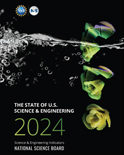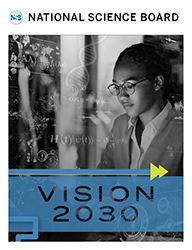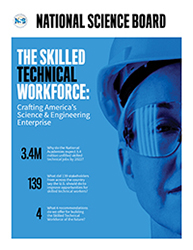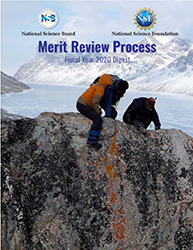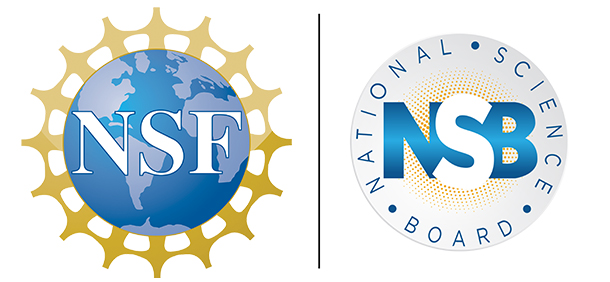
Merit Review report is now available
Annual report to National Science Board on NSF awards to research community
September 19, 2016
“Merit review is the lifeblood of NSF. It is how we identify the best science to fund. It is the core of promoting the progress of science and the reason taxpayers give the NSF and the research community so much independence,” said John Anderson, Chair of the National Science Board’s Committee on Audit and Oversight.
The National Science Foundation (NSF) prepares a report on merit review annually for the National Science Board (NSB, Board), the agency’s policymaking body. The report, which has been published each year since the 1970s, makes publically available information on how NSF, the nation’s only federal agency supporting discovery research in all fields of science and engineering, awards public dollars to the research community.
The report is also an important tool for the Board.
“Although the NSB has delegated its authority for administering most awards,” said Anderson, “we are still responsible for setting the merit review criteria, for ensuring that practices are transparent and further the objectives of NSF, and processes are fair and conducted with complete integrity. NSF and the Board stand accountable for every decision.”
Anderson made his comments during the Board’s recent meeting when members discussed the just-released fiscal year 2015 merit review report. The report features proposal and awards data, information about the merit review process. This year, it also describes the impacts of several pilot programs, as well as the results of a recent survey on merit review.
Among the report’s findings:
• NSF made more than 12,000 awards in fiscal year 2015, 9.6 percent more than in FY 2014 and mostly to academic institutions.
• Last year 35,000 scientists, engineers, and educators reviewed grant proposals for NSF.
• The grant proposal success rate was higher for women than men but the proportion of female principal investigators remained low, as is their representation in academia.
In evaluating proposals, NSF uses two merit review criteria: intellectual merit and broader impacts. In 2007, the Board modified the criteria to promote potentially transformative research and its 2011 report, Merit Review Criteria: Review and Revisions, affirmed and more clearly defined these criteria. NSF’s merit review system is frequently referred to as the gold standard for vetting research proposals and serves as a model approach, both nationally and internationally.
Sethuraman Panchanathan, Chair of NSB’s Committee on Strategy and Budget, expressed his hope that the Board will use the latest merit review report to assess how the process is functioning and where there is room for improvement.
“We must continue to be vigilant in how we invest taxpayer dollars, how we prioritize, and ultimately, how we promote the progress of science,” he said.
For more information, please contact Nadine Lymn, NSB Communications Director, nlymn@nsf.gov, (703) 292-2490.
View a short video about NSF’s merit review process here.
About NSB
The NSB is the policymaking body for the National Science Foundation. NSB also advises the President and Congress on science and engineering policy issues. The Board’s 24 members are drawn primarily from universities and industry and represent a variety of science and engineering disciplines. Selected for their eminence in research, education or public service and records of distinguished service, Board members serve six-year terms. NSF’s Director is an ex officio 25th member of the Board.
Useful NSB Web Sites:
Home Page: http://www.nsf.gov/nsb
Media Contact: http://www.nsf.gov/staff/staff_bio.jsp?lan=nlymn&org=NSF
News: http://www.nsf.gov/nsb/news
Meetings: http://www.nsf.gov/nsb/meetings
Publications: http://www.nsf.gov/nsb/publications
Facebook: https://www.facebook.com/NationalScienceBoard
Twitter: Twitter: https://twitter.com/intent/user?screen_name=NSF_NSB
YouTube: https://www.youtube.com/channel/UCkrHRzuGSrPp2haQs0T_Pww
To view PDF documents, please download Adobe Acrobat Reader.
